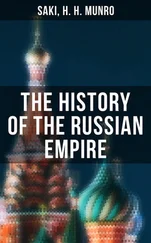 Angel Of Victory. (From a Fifth-century Diptych.) Reproduced from "L'Art Byzantin." Par Charles Bayet. Paris, Quantin, 1883.
Angel Of Victory. (From a Fifth-century Diptych.) Reproduced from "L'Art Byzantin." Par Charles Bayet. Paris, Quantin, 1883.
The reconstruction of the Roman military forces was reserved for the successors of Theodosius II. He himself was killed by a fall from his horse in 450 a.d., leaving an only daughter, who was married to her cousin Valentinian III., Emperor of the West. Theodosius, with great wisdom, had designated as his successor, not his young-son-in-law, a cruel and profligate prince, but his sister Pulcheria, who at the same time ended her vow of celibacy and married Marcianus, a veteran soldier and a prominent member of the Senate. The marriage was but formal, for both were now well advanced in years: as a political expedient it was all that could be desired. The empire had peace and prosperity under their rule, and freed itself from the ignominious tribute to the Huns. Before Attila died in 452, he had met and been checked by the succours which Marcianus sent to the distressed Romans of the West.
When Marcianus and Pulcheria passed away, the empire came into the hands of a series of three men of ability. They were all bred as high civil officials, not as generals; all ascended the throne at a ripe age; not one of them won his crown by arms, all were peaceably designated either by their predecessors, or by the Senate and army. These princes were Leo I. (457-474), Zeno (474-491), Anastasius (491-518). Their chief merit was that they guided the Roman Empire in the East safely through the stormy times which saw its extinction in the West. While, beyond the Adriatic, province after province was being lopped off and formed into a new Germanic kingdom, the emperors who reigned at Constantinople kept a tight grip on the Balkan Peninsula and on Asia, and succeeded in maintaining their realm absolutely intact. Both East and West were equally exposed to the barbarian in the fifth century, and the difference of their fate came from the character of their rulers, not from the diversity of their political conditions. In the West, after the extinction of the house of Theodosius (455 a.d.), the emperors were ephemeral puppets, made and unmade by the generals of their armies, who were invariably Germans. The two Magistri militum, Ricimer and Gundovald—one Suabian , the other Burgundian by birth—deposed or slew no less than five of their nominal masters in seventeen years. In the East, on the other hand, it was the emperors who destroyed one after another the ambitious generals, who, by arms or intrigue, threatened their throne.
While this comparison bears witness to the personal ability of the three emperors who ruled at Constantinople between a.d. 457 and a.d. 518, it is only fair to remember they were greatly helped by the fact that the German element in their armies had never reached the pitch of power to which it had attained in the West; the suppression of Gainas forty years before had saved them from that danger. But unruly and aspiring generals were not wanting in the East; the greatest danger of Leo I. was the conspiracy of the great Magister militum Aspar , whom he detected and slew when he was on the eve of rebelling. Zeno was once chased out of his capital by rebels, and twice vexed by dangerous risings in Asia Minor, but on each occasion he triumphed over his adversaries, and celebrated his victory by the execution of the leaders of the revolt. Anastasius was vexed for several years by the raids of a certain Count Vitalian, who ranged over the Thracian provinces with armies recruited from the barbarians beyond the Danube. But, in spite of all these rebellions, the empire was never in serious danger of sinking into disorder or breaking up, as the Western realm had done, into new un-Roman kingdoms. So far was it from this fate, that Anastasius left his successor, when he died in a.d. 518, a loyal army of 150,000 men, a treasure of 320,000 lbs. of gold, and an unbroken frontier to East and West.
The main secret of the success of the emperors of the fifth century in holding their own came from the fact that they had reorganized their armies, and filled them up with native troops in great numbers. Leo I. was the first ruler who utilized the military virtues of the Isaurians, or mountain populations of Southern Asia Minor. He added several regiments of them to the army of the East, but it was his son-in-law and successor, Zeno, himself an Isaurian born, who developed the scheme. He raised an imperial guard from his countrymen, and enlisted as many corps of them as could be raised; moreover, he formed regiments of Armenians and other inhabitants of the Roman frontier of the East, and handed over to his successor, Anastasius, an army in which the barbarian auxiliaries—now composed of Teutons and Huns in about equal numbers—were decidedly dominated by the native elements.
The last danger which the Eastern Empire was to experience from the hands of the Germans fell into the reign of Zeno. The Ostrogoths had submitted to the Huns ninety years before, when their brethren the Visigoths fled into Roman territory, in the reign of Valens. But when the Hunnish Empire broke up at the death of Attila [a.d. 452], the Ostrogoths freed themselves, and replaced their late masters as the main danger on the Danube. The bulk of them streamed south-westward, and settled in Pannonia, the border-province of the Western Empire, on the frontier of the East-Roman districts of Dacia and Moesia. They soon fell out with Zeno, and two Ostrogothic chiefs, Theodoric, the son of Theodemir, and Theodoric, the son of Triarius, were the scourges of the Balkan Peninsula for more than twenty years. While the bulk of their tribesmen settled down on the banks of the Save and Mid-Danube, the two Theodorics harried the whole of Macedonia and Moesia by never-ending raids. Zeno tried to turn them against each other, offering first to the one, then to the other, the title of Magister militum , and a large pension. But now—as in the time of Alaric and Stilicho—it was seen that “dog will not eat dog”; the two Theodorics, after quarrelling for a while, banded themselves together against Zeno. The story of their reconciliation is curious.
Theodoric, the son of Theodemir, the ally of Rome for the moment, had surrounded his rival on a rocky hill in a defile of the Balkans. While they lay opposite each other, Theodoric, the son of Triarius [he is usually known as Theodoric the One-Eyed], rode down to his enemy's lines and called to him, “Madman, betrayer of your race, do you not see that the Roman plan is always to destroy Goths by Goths? Whichever of us fails, they, not we, will be the stronger. They never give you real help, but send you out against me to perish here in the Desert.” Then all the Goths cried out, “The One-Eyed is right. These men are Goths like ourselves.” So the two Theodorics made peace, and Zeno had to cope with them both at once [a.d. 479]. Two years later Theodoric the One-Eyed was slain by accident—his horse flung him, as he mounted, against a spear fixed by the door of his tent—but his namesake continued a thorn in the side of the empire till 488 a.d.
In that year Zeno bethought him of a device for ridding himself of the Ostrogoth, who, though he made no permanent settlement in Moesia or Macedonia, was gradually depopulating the realm by his incursions. The line of ephemeral emperors who reigned in Italy over the shrunken Western realm had ended in 476, when the German general Odoacer deposed Romulus Augustulus, and did not trouble himself to nominate another puppet-Cæsar to succeed him. By his order a deputation from the Roman Senate visited Zeno at Constantinople, to inform him that they did not require an emperor of their own to govern Italy, but would acknowledge him as ruler alike of East and West; at the same time they besought Zeno to nominate, as his representative in the Italian lands, their defender, the great Odoacer. Zeno replied by advising the Romans to persuade Odoacer to recognize as his lord Julius Nepos, one of the dethroned nominees of Ricimer, who had survived his loss of the imperial diadem. Odoacer refused, and proclaimed himself king in Italy, while still affecting—against Zeno's own will—to recognize the Constantinopolitan emperor as his suzerain.
Читать дальше

 Angel Of Victory. (From a Fifth-century Diptych.) Reproduced from "L'Art Byzantin." Par Charles Bayet. Paris, Quantin, 1883.
Angel Of Victory. (From a Fifth-century Diptych.) Reproduced from "L'Art Byzantin." Par Charles Bayet. Paris, Quantin, 1883.










